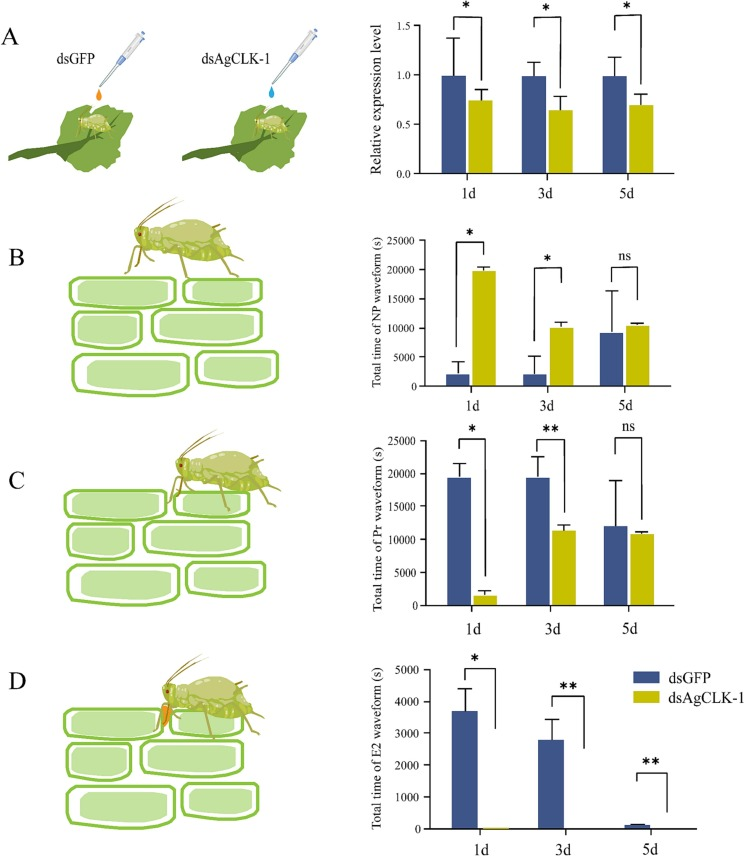- Location : Home» Newsroom
Silencing the rhythm gene AgCLK-1 reduced feeding of Aphis gossypii
The cotton aphid Aphis gossypii Glover is an important cotton pest, and means of controlling this insect is a primary research focus. Although biological rhythm is an important mechanism that regulates numerous insect processes and activities, its role in cotton aphid has not been elucidated. In the present study, four highlyexpressed circadian rhythm genes were selected from the cotton aphid genome database and their physicochemical properties and protein structures were analyzed. These genes were in the Takeout, Timeless, and Timeless interacting-related families, and the corresponding proteins contained highly-conserved Swis and TIMELESS domains. Gene expression analysis at multiple developmental stages revealed differing expression patterns between the four genes. AgCLK-1 had the highest relative expression of the four, especially during the nymph period. Silencing AgCLK-1 caused a significant refusal of the cotton aphids to feed at 1, 3, and 5 d of treatment. These results demonstrated that AgCLK-1 played a key role in regulating the feeding behavior of cotton aphid. This new functional understanding provides novel insights into cotton aphid biology and suggests new targeting strategies for agricultural pest control.
The authors would like to thank the Cotton Research Institute of the Chinese Academy of Agricultural Sciences (CAAS) for providing the experimental materials and equipment.
